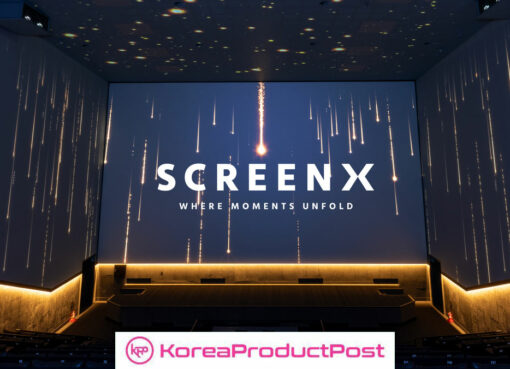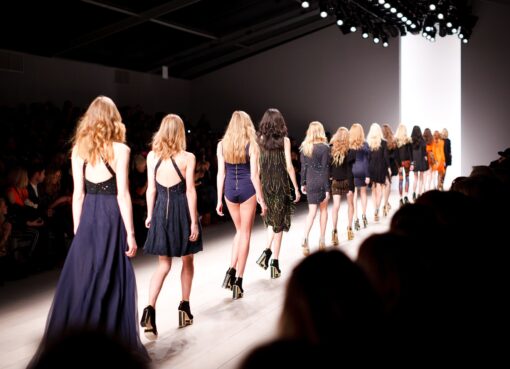Have you ever imagined finding such a magnificent project that’s so iconically Korean only to find out that they’re NOT actually made in South Korea? Yes, that’s what “KPop Demon Hunters” Netflix animation is about.
At first glance, it may look like those overrated Western productions. But just take a closer look and you will see how this impressive animation actually speaks South Korea more than some of the homegrown projects.
And through “KPop Demon Hunters,” we’d like to invite you into seeing how already massive the influence of South Korean hallyu wave in the global entertainment industry, including animation.
“KPop Demon Hunters”: A Non-Korean Story that Actually Breathes South Korea
It’s always fascinating when you come across projects that’s so richly steeped in Korean culture that it takes you by surprise when you learn it was not actually made in South Korea. That’s the experience you will have with “KPop Demon Hunters,” a vibrant animated fantasy set to premiere on Netflix in June 2025.
The film may be developed by Sony Pictures Animation. It’s also released through Netflix. And yet, its language—visually, musically, and thematically—feels deeply informed by South Korean culture.
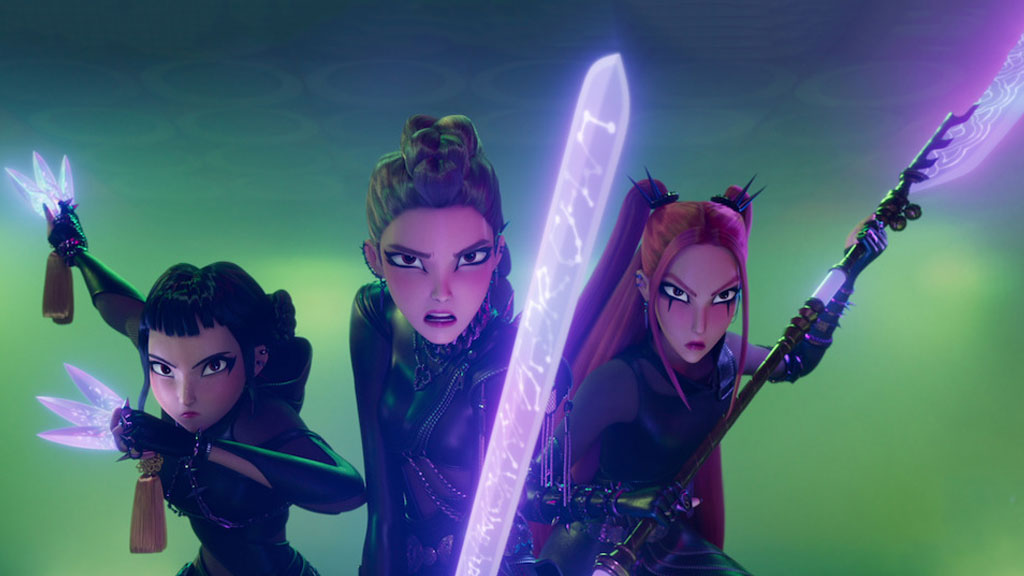
From the way the characters are formed to how the emotional arcs unfold, everything about this project reflects how far the Korean wave has reached. It’s not only that K-pop and K-dramas are globally popular. It’s the fact that their narrative structures, emotional tones, and artistic standards have begun shaping how the world tells stories—regardless of where those stories are made.
“KPop Demon Hunters” doesn’t simply borrow from Korea’s creative toolbox. It builds something new with it. And that’s precisely what makes it worth paying attention to. Because beneath the English dialogue and Hollywood production credits, you’ll find a creative blueprint that reflects Korea’s cultural influence at every level.
A Netflix Animation That’s Entirely K-pop Coded
The story of Netflix “KPop Demon Hunters” animation tells the playful story of Rumi, Mira, and Zoey, global K-pop stars by day—and demon hunters by night.
While performing on global stages and dazzling their fans, they secretly fight supernatural threats to protect the very people who adore them. But their biggest challenge arrives in the form of a rival boy band—a seductive, stylish group of demons in disguise.

And this premise may sound just unexpectedly symbolic. Because if you think that you’d only see those classic fantasy-action like what Western animation delivers, you’d be surprise how seamlessly K-pop-coded Netflix “KPop Demon Hunters” animation is. You will find traces of K-pop survival arcs, girl group dynamics, trainee-level teamwork, and the emotional stakes of idol life—layered underneath glowing swords and monster-fighting spectacle.
And if you’re familiar with the world of Korean pop culture, this narrative will feel just instinctively personal.
Delivering Authentic Narrative of Korean Idols
Now, what’s even more striking about “KPop Demon Hunters” is how authentically this Netflix animation integrates the story on those emotional mechanics that define Korean idol narratives.
How come? Well, if you take a look closer, the “idol by day, demon slayer by night” setup itself is way beyond just a simple metaphor. It’s framework that reflects the dual burden of public-vs-private personas that K-pop idols must face in real life. And as fans of hallyu wave, we all know how costly this dual-life reality is.
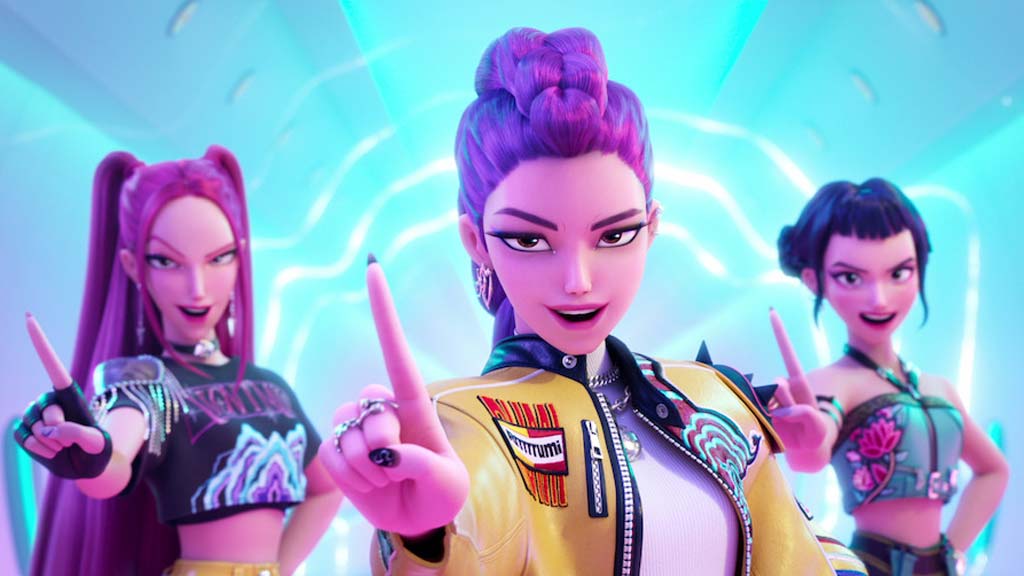
Behind every stylized fight sequence, there’s the weight of performance. Behind every costume reveal, there’s the reality of expectations. The trio of Rumi, Mira, and Zoey may seem to be switching between idol life and battling monsters. But if you take a look, and REALLY take a look closer, then you will find the core issues that come with fame: identity confusion, battles with burnout, and the constant surveillance.
And these are themes that K-pop has explored in music videos, documentaries, and behind-the-scenes content for years—yet rarely receive such direct visual storytelling in global mainstream animation.
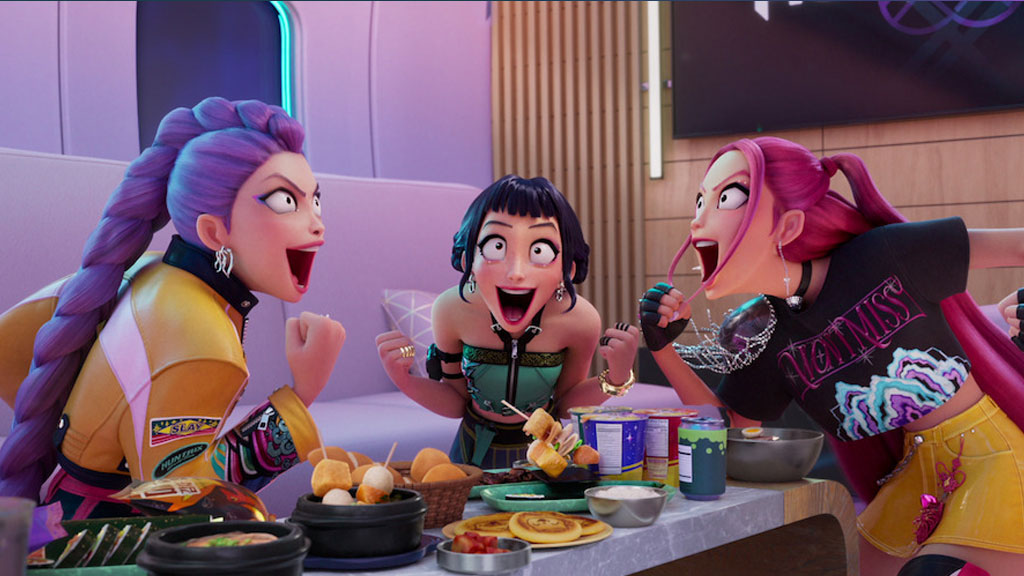
This is where “KPop Demon Hunters” steps into something more meaningful. It doesn’t parody K-pop. It actually studies the culture then reinterprets them through fantasy. Hence, it results in a brilliant satire, revealing truths the industry itself sometimes struggles to say aloud.
Characters That Channel Korean Archetypes Without Flattening Them
Now, let’s move to the main trio: Rumi, Mira, and Zoey. If you see them from the surface, they follow familiar K-pop group roles—the leader, the wild card, the visual. But what Netflix “KPop Demon Hunters” animation does differently is grant them emotional depth beyond those positions.
Rumi, voiced by Arden Cho, has the calm precision of a trained leader, but may also represent the loneliness of someone who’s always expected to hold it together. Mira, brought to life by May Hong, is loud, physical, and emotionally intuitive. She’s basically like a real-world main dancer with too many bruises to count. And Zoey, the innocent maknae played by Yoo Ji Young, has reserved but sharp characteristics, channeling the kind of stage presence that doesn’t demand the spotlight but always earns it.
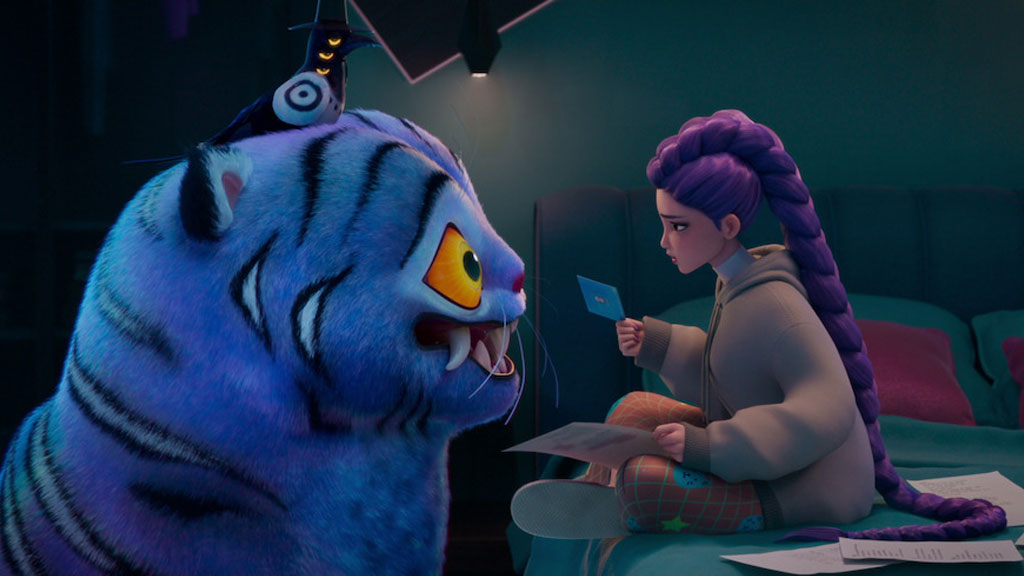
Sound familiar? Well, that’s because these are the brilliant and careful constructions of what girl group members become after the cameras stop rolling. If you’ve ever followed a K-pop group through years of comebacks, hiatuses, and lineup changes, you’ll recognize the emotional realism immediately.
Not only that but even Jinu, the rival boy band leader voiced by the one-and-only rising hallyu prince Ahn Hyo Seop (“Red Sky,” “Omniscient Readers,” “A Time Called You,” etc.), is way more than just a mere flat villain. He’s charismatic, wounded, and complex—bringing a familiar K-drama intensity to the antagonistic role.
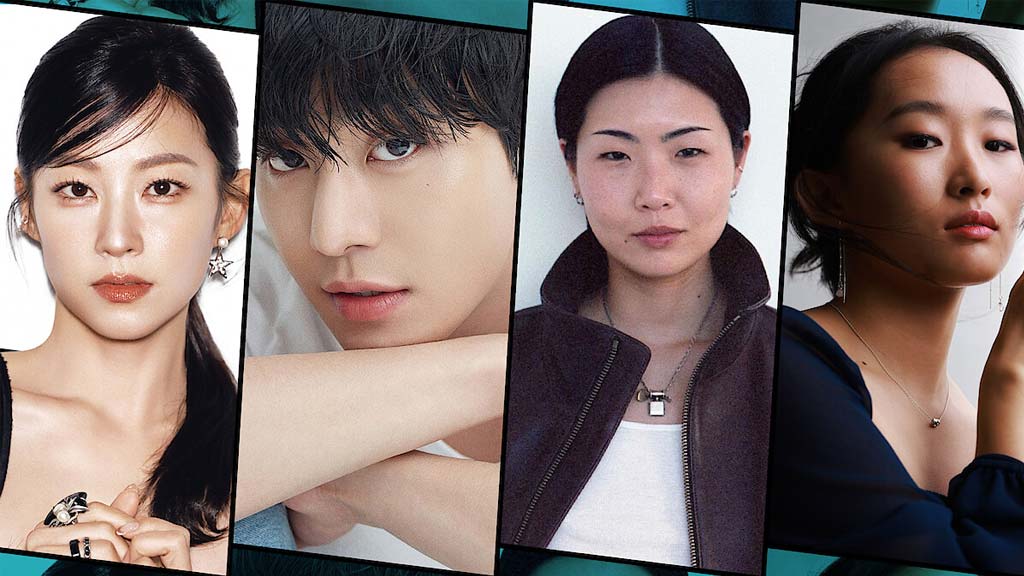
The rivalry between these two groups will reflect more than jus good versus evil. It’s about image versus truth, control versus chaos, and the dangerous allure of personas built to manipulate.
An OST Collection That’s ENTIRELY K-pop
Most Western animations that feature musical elements tend to follow the Broadway-meets-pop formula. Netflix “KPop Demon Hunters” animation rejects that entirely. Instead, it commits to an actual K-pop production pipeline. Hence, they are bringing in major names from the industry—not as consultants, but as the very architects of the film’s sound.
The original theme song is performed by Jeongyeon, Jihyo, and Chaeyoung of TWICE, the legendary K-pop 3rd generation group. And this is a calculated move that brings more authentic K-pop living soul. Why? Because by making the three brilliant TWICE members voicing these main characters, Netflix is also bringing the whole fandom into the animation.
Meanwhile, production credits include Teddy Park, 24, and DOMINSUK of THEBLACKLABEL. Teddy Park is the very person behind the brilliant sound of BIGBANG, 2NE1, and BLACKPINK. And THEBLACKLABEL is his very company.
The songs will also follow real K-pop structure, balancing high-concept hooks with emotional lyrics, genre fusion, and layered vocal texture. These are tracks designed to live outside the film. Tracks that could easily debut on Inkigayo or trend on Korean streaming platforms.
And for a film that revolves around idols, this has been a powerful move. After all, if you’re going to tell a K-pop story, the music should hold up under K-pop standards.
The Unmistakable Aesthetic of Hallyu, Reimagined in Animation
Visually, Netflix “KPop Demon Hunters” animation leans into a cinematic animation style—slick, expressive, and kinetic. However, if you’ve ever studied K-pop music videos or webtoon page layouts, you will definitely see the undeniable influence.
The fight scenes are choreographed with the same beat-count structure used in idol stage performances. Weapons become the extensions of each girl’s identity, much like those iconic concepts in comeback teasers. Even the lighting and costume design draw from K-pop’s stage mythology. They blend high fantasy with real-world styling seen in concept trailers from groups like aespa or DREAMCATCHER.

Therefore, it’s not simply that the Netflix animation uses K-pop visuals. It understands their narrative function. Costumes tell backstory. Lighting signals vulnerability. And movement replaces dialogue in moments of emotional impact. And these are techniques perfected in Korean entertainment—now seamlessly adopted into a Western animation structure.
South Korea: Not the Creator, But Definitely the Architect
And that’s perhaps the most significant takeaway of all. “KPop Demon Hunters” is not a Korean production. It wasn’t funded by a Korean studio, nor was it animated by a Korean team. But none of that stops it from feeling more Korean than many actual Korean projects.
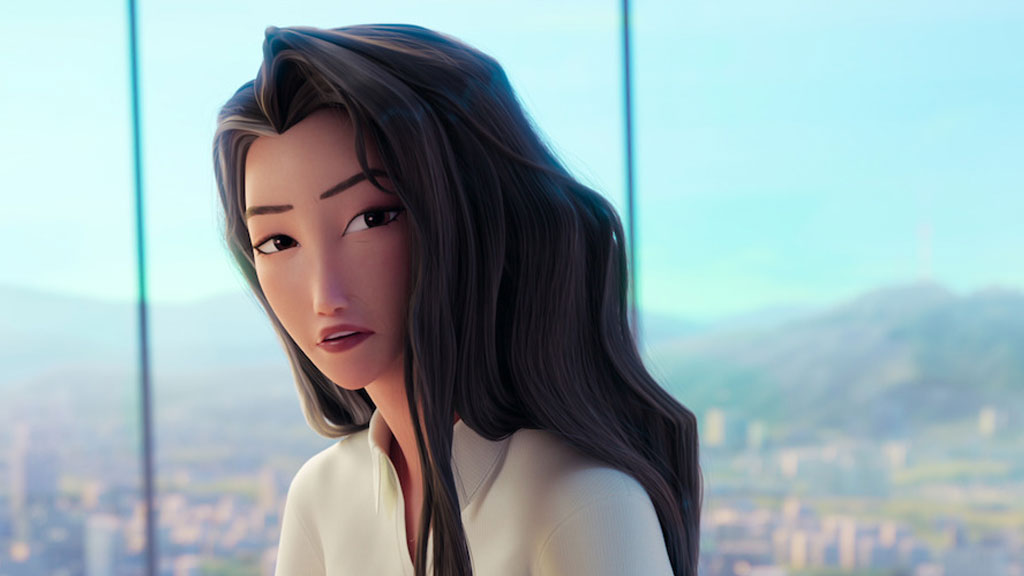
That’s the true mark of Hallyu’s global reach.
It’s no longer about exporting content from Seoul. Instead, it’s about embedding Korean storytelling logic into the DNA of international media. Most importantly, it’s about creators around the world adopting Korean emotional rhythms, character archetypes, and cultural references. And not because they’re trending, but because they actually work.
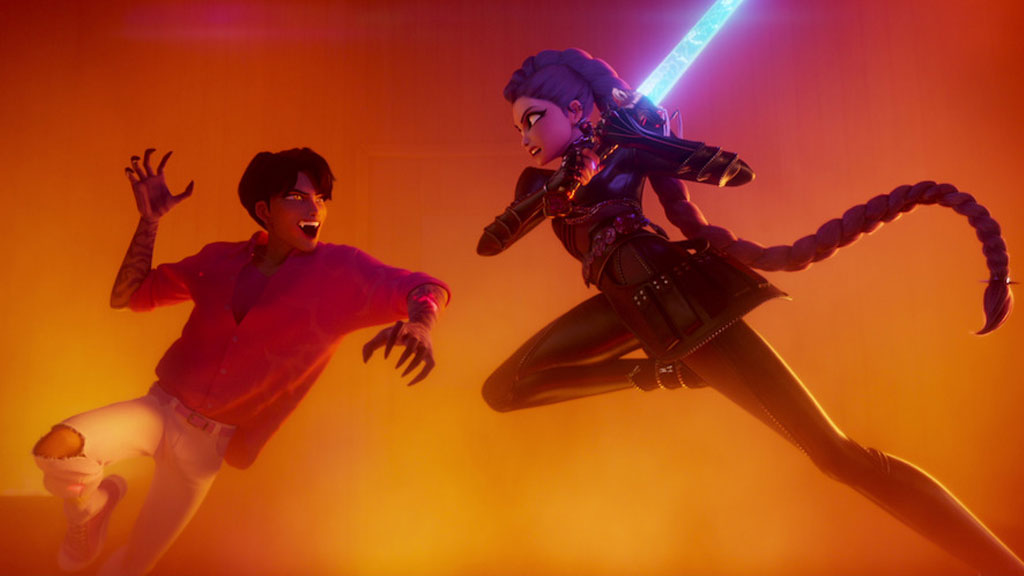
What this film proves is that the Korean wave has shifted from novelty to narrative infrastructure. It doesn’t need to have K-content label to carry Korean meaning.
Netflix “KPop Demon Hunters”: Global Animation Just Learned to Speak K-pop
Finally, once you watch “KPop Demon Hunters,” you will see how this Netflix animation is bold, strange, and sincere. It blends fantasy tropes with idol culture, western fantasy action with radiant styling. And even though it was produced outside South Korea, it carries a distinctly Korean heartbeat—a rhythm that global audiences have learned not just to recognize, but to expect.
So while this Netflix animation may not come with a “Made in Korea” label, it’s one of the clearest signs yet that Korea hallyu’s influence doesn’t stop at its borders. It shapes how stories are imagined, how music is built, how characters are drawn, and how emotion is expressed.
If this is the future of global animation, then South Korea has already written its language.
So, what are you waiting for? Watch “KPop Demon Hunters” on Netflix premiering on June 20, 2025!
If you’re looking to promote your products and connect with international buyers, please don’t hesitate to contact us.






